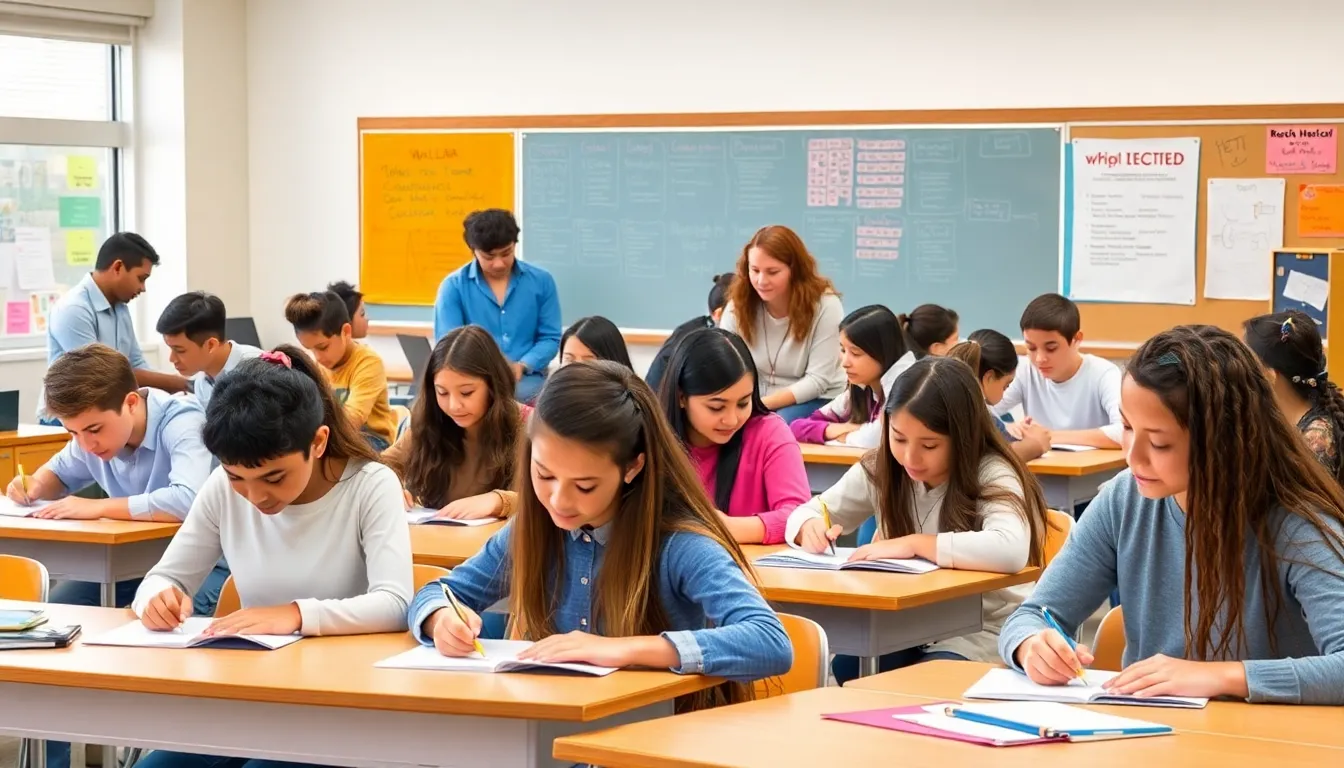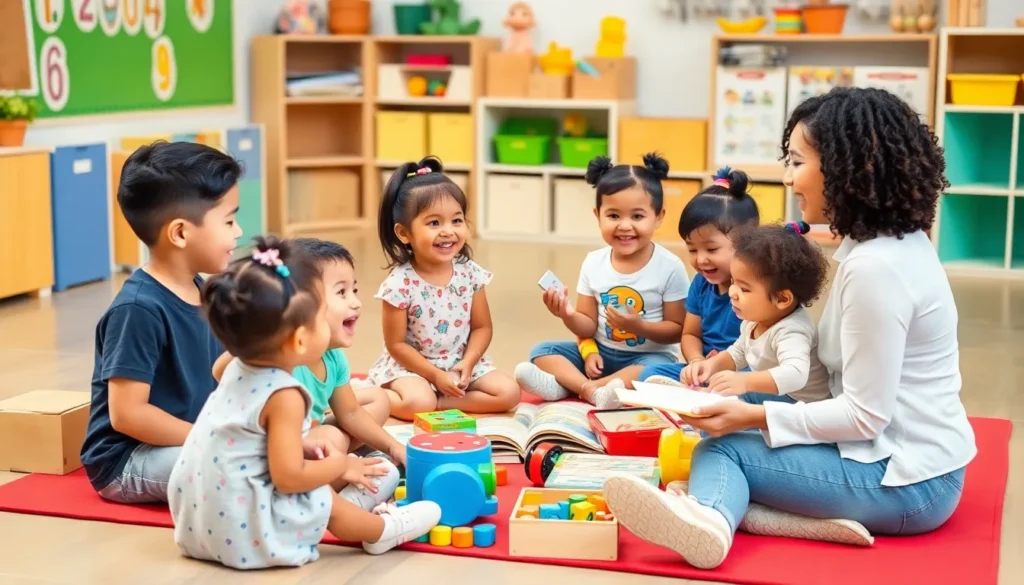Table of Contents
ToggleWhen traditional classrooms feel more like a battleground than a learning environment, disciplinary alternative education programs step in like a superhero with a cape made of patience and understanding. These programs aren’t just about punishment; they’re about giving students a second chance to shine brighter than a disco ball at a dance-off.
Imagine a place where students can learn from their mistakes while still getting an education tailored to their needs. That’s the magic of disciplinary alternative education. It’s not just a timeout; it’s a transformative journey that helps students navigate their way back to success. With the right support and guidance, these programs can turn potential troublemakers into future leaders. So, buckle up as we dive into the world of disciplinary alternative education and explore how it’s reshaping futures one student at a time.
Understanding Disciplinary Alternative Education Programs
Disciplinary alternative education programs offer tailored educational experiences for students facing challenges in traditional environments. These programs emphasize rehabilitation and provide a pathway for students to redefine their educational journey.
Purpose and Goals
The primary purpose of disciplinary alternative education programs is to redirect students towards positive behaviors. These programs aim to reduce the likelihood of recurrent disciplinary issues while enhancing academic performance. Educational goals include promoting social skills, improving self-discipline, and fostering accountability. By creating a structured environment, these programs encourage students to make better choices. Ultimately, they strive to equip participants with the skills necessary for successful reintegration into mainstream education.
Eligibility Criteria
Eligibility criteria for disciplinary alternative education programs vary by district. Common factors include prior disciplinary actions, behavioral assessments, and academic performance indicators. Students typically facing suspension or expulsion from regular schools may qualify. Age restrictions often exist, with programs targeting middle and high school students. Additionally, some programs may consider the nature of the offense, previous interventions, and recommendations from educators or counselors. Meeting these criteria often facilitates a smoother transition into the program, supporting students in overcoming challenges.
Types of Disciplinary Alternative Education Programs

Disciplinary alternative education programs come in various formats to cater to student needs. Understanding these types helps identify the right fit for students facing challenges.
Short-Term Programs
Short-term programs typically span a few weeks to a semester, serving students temporarily removed from their home schools. During this period, students receive focused academic support while addressing behavioral concerns. Curricula often emphasize essential subjects, enabling students to stay on track with educational goals. These programs encourage the development of coping strategies and conflict resolution skills. Schools may integrate counseling services to guide students through personal challenges.
Long-Term Programs
Long-term programs generally last six months to a year, aiming for deeper behavioral change through sustained engagement. These programs involve comprehensive academic instruction alongside behavioral interventions. Students engage in individualized learning plans designed to meet specific needs. Long-term programs frequently incorporate life skills training, enhancing personal growth and responsibility. By fostering a sense of community, these programs encourage positive peer interactions, further supporting students on their path to reintegration.
Benefits of Disciplinary Alternative Education Programs
Disciplinary alternative education programs provide numerous benefits that significantly enhance students’ educational experiences. These programs focus on tailored support systems to address both academic and personal development needs.
Academic Support
Academic support remains a key benefit of these programs. Students receive individualized attention that helps them grasp challenging concepts. Specialized instruction aligns with their learning styles, allowing for a more effective educational experience. Structured environments foster consistent study habits and responsibility. Additionally, academic performance often improves, leading to better grades. Positive reinforcement strategies engage students, helping them stay motivated. This comprehensive approach ensures that students can advance academically while also addressing their behavioral challenges.
Social and Emotional Development
Social and emotional development constitute another crucial advantage of these programs. Students enhance their interpersonal skills through guided interactions with peers. Group activities promote teamwork and collaborative problem-solving, which are essential life skills. Moreover, programs often include counseling services that help address emotional issues, providing students with coping mechanisms. This focus on resilience and emotional intelligence contributes to overall well-being. As a result, students often develop a stronger sense of identity and purpose, preparing them for future success in both school and life.
Challenges and Considerations
Disciplinary alternative education programs provide much-needed support, yet they face challenges that require attention. Issues such as stigmatization and resource allocation significantly impact these programs’ effectiveness.
Stigmatization of Students
Students in disciplinary alternative education programs often face stigma from peers, educators, and the broader community. This labeling can lead to feelings of isolation, impacting self-esteem and motivation. Negative perceptions may persist, even as these students work to change their behaviors and attitudes. Reducing stigma becomes essential for fostering an inclusive atmosphere. Programs that educate stakeholders about the positive aspects of alternative education can help mitigate misconceptions. Encouraging open discussions about students’ experiences can further cultivate empathy and understanding.
Resource Allocation
Resource allocation presents another challenge for disciplinary alternative education programs. Limited funding can restrict access to vital support services, including counseling and tutoring. Schools may struggle to recruit qualified staff capable of addressing diverse student needs. Unequal distribution of resources across districts exacerbates these issues, resulting in subpar educational experiences. Prioritizing investments in training and resources can enhance the quality of these programs. Collaboration with community organizations often provides additional support, creating well-rounded educational environments that benefit students.
Conclusion
Disciplinary alternative education programs offer a vital lifeline for students facing challenges in traditional educational settings. By focusing on rehabilitation and individualized support these programs create pathways for students to reclaim their educational journeys. They not only address academic needs but also foster essential social and emotional skills.
The commitment to reducing stigma and enhancing resource allocation is crucial for maximizing the effectiveness of these programs. With the right support and understanding from the community, students can thrive and develop into responsible, engaged individuals. Embracing the potential of disciplinary alternative education can lead to a brighter future for many students in need.




